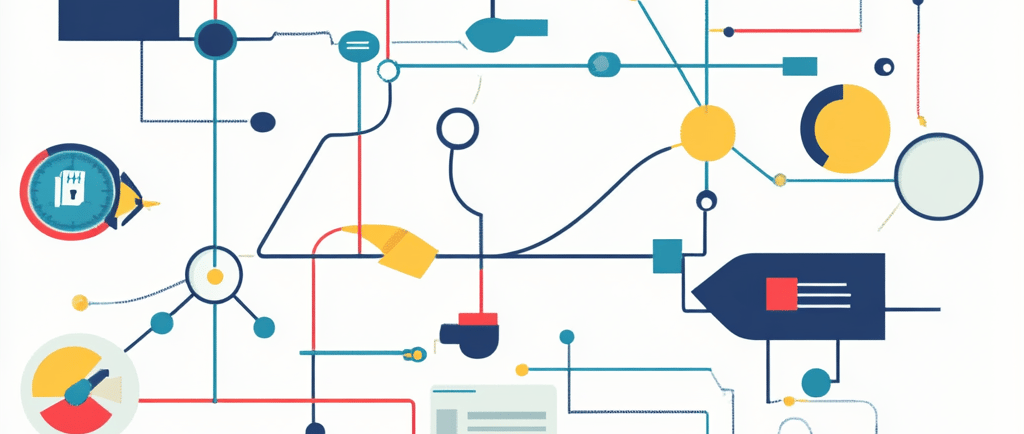The Successive Approximation Model (SAM) to Create Flexible Training Programs
The Successive Approximation Model (SAM) is an agile, iterative instructional design process that focuses on rapid prototyping, continuous feedback, and flexible adaptation to changing learner needs.
LEARNING OUTCOMESTECHNOLOGYLEARNING OBJECTIVESOUTCOME ASSESSMENT OBJECTIVE OUTCOMES
9/27/20242 min read


TL;DR
SAM Defined: Successive Approximation Model (SAM) is an agile, iterative instructional design model focused on rapid prototyping and continuous feedback.
Key Difference: Unlike traditional linear models like ADDIE, SAM allows for ongoing adjustments during development.
Ideal for Rapid Development: SAM is great for making "on the fly" adjustments and adapting to evolving needs over time.
Steps:
Preparation: Quickly gather project info and define goals.
Iterative Design: Create small prototypes and refine continuously.
Iterative Development: Build the final product, making tweaks as needed.
Implementation & Evaluation: Launch, gather feedback, and continuously improve.
Adaptability: SAM allows projects to evolve even after launch, ensuring they meet current learner needs.
What is the Successive Approximation Model?
The Successive Approximation Model (SAM) is a flexible, iterative instructional design process that emphasizes rapid prototyping and continuous refinement. Rather than working through each phase of a design process one by one, SAM encourages frequent updates and revisions to ensure alignment with learner needs.
How SAM Differs from Other Models
Unlike traditional instructional design models such as ADDIE (Analyze, Design, Develop, Implement, Evaluate), which is linear and sequential, SAM operates in cycles. In ADDIE, you complete one phase fully before moving on to the next, but SAM focuses on ongoing development and adjustment.
Key Difference:
ADDIE: Linear, with defined phases.
SAM: Cyclical, with ongoing iterations.
Why SAM is Ideal for On-the-Fly Adjustments
SAM is especially beneficial for projects that may require updates or changes mid-development. As feedback is received, designers can immediately incorporate these insights, making it a potentiall more adaptive model. This real-time flexibility makes SAM perfect for fast-paced environments where learning goals may shift.
Steps of the Successive Approximation Model
Preparation Phase
In this phase, you quickly gather the project's requirements, goals, and constraints, allowing you to move into the design phase swiftly.Goal: Understand the project scope and learner needs.
Activities: Interviews, data collection, resource analysis.
Iterative Design Phase
The focus here is on creating small, functional prototypes and testing them.Goal: Develop an early version and refine continuously.
Activities: Prototyping, feedback collection, revisions.
Iterative Development Phase
This phase builds on the prototype, creating the final product, with room for ongoing adjustments based on continuous feedback.Goal: Finalize the product with continuous tweaks.
Activities: Course building, testing, content refinement.
Implementation and Evaluation
After launching the product, continuous feedback is gathered to improve or evolve the final version.Goal: Assess long-term effectiveness and adjust post-launch.
Activities: Surveys, performance tracking, ongoing refinements.
How SAM Evolves Over Time
With SAM, the project doesn't remain static after implementation. Continuous feedback ensures the project evolves to stay aligned with the audience’s needs. Whether it’s incorporating new content or enhancing user engagement, SAM adapts over time, making it perfect for fast-moving fields like technology or e-learning.
Key Considerations for Your Setting
Dynamic Environments: Ideal for projects needing rapid updates.
Budget Flexibility: Iterations may extend timelines or costs.
Stakeholder Engagement: Involve stakeholders early for continuous feedback.
References
Jung, et al. (2019). Successive Approximation Model: Improving Design Efficiency and Effectiveness.
Tech Inclusion Pro LLC
COntact us:
techinclusionpro@gmail.com
© 2024. All rights reserved.